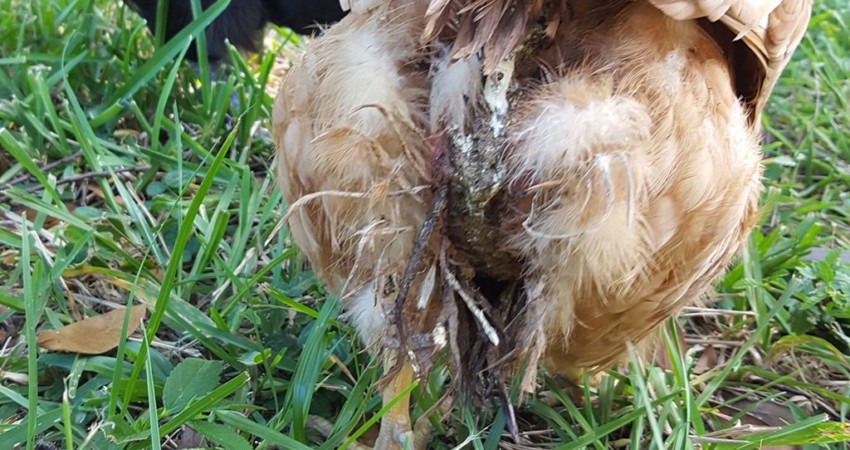

With chicken ownership comes experience in dealing with unpleasant illness and disease, and vent gleet is no exception. Also known as cloacitis or thrush, vent gleet is a fungal infection that, as the name suggests, shows its presence at the vent. This illness, which can affect digestive and reproductive systems, is luckily not contagious amongst birds with the exception of birds who are mating as it can be spread through sexual contact from hen to rooster. Additionally it can impact birds of all ages and sexes.
Signs that you have a case of vent gleet on your hands can vary, but the first thing typically noticed is white or nearly white discharge from the vent. Feather loss is often part of the problem and those feathers that remain will likely have feces stuck to them. A crusty texture may also be present along with red, inflamed skin, and in severe cases the vent many even bleed. One of the telltale signs that can help you specifically identify vent gleet aside from discharge is the odor it produces. Since vent gleet is caused by yeast (Candida Albicans), the smell of yeast will be present. Other symptoms include loose stools, weight loss, swollen abdomen, and mouth lesions.
There are a lot of reasons for vent gleet to occur. In most cases, it has to do with ingesting something contaminated, such as water or food that is past its prime and has become rancid or moldy. Achieving a proper bacterial balance in the gut through the use of probiotics is helpful in combatting issues such as vent gleet, as it is when gut bacteria is not at normal levels that vent gleet may also occur. Sour crop can also contribute to vent gleet as it is caused by the same type of yeast and is essentially a yeast infection within the crop.
Once a case of vent gleet has been confirmed, it will need to be treated beginning with a thorough cleansing of the vent. After the bird is clean, apply a topical cream to the area for up to two weeks; this cream should be anti-fungal just like you would use on a case of athlete’s foot. Nystatin is also a good treatment but depending on where you live may require a veterinary prescription. Probiotics or garlic added to water may also be helpful during the treatment process. Since vent gleet is a problem created by yeast overgrowth, antibiotics are not useful in treatment and can actually make the problem worse, thus they should be avoided. In fact, it may be antibiotic use that caused the vent gleet to occur in the first place.
With your case of vent gleet under control, there are steps you can take to keep it that way. The primary prevention of vent gleet is simply keeping things clean, such as the coop, food, and water. In addition to keeping chicken areas clean, maintaining a dry environment is beneficial as well, since it is not conducive to yeast growth. Beyond that, adding a little apple cider vinegar to plastic waterers (vinegar will damage metal ones) and keeping probiotics in use to maintain good gut bacteria should be enough to keep vent gleet away.
 Contact Jaguza Support
Contact Jaguza Support